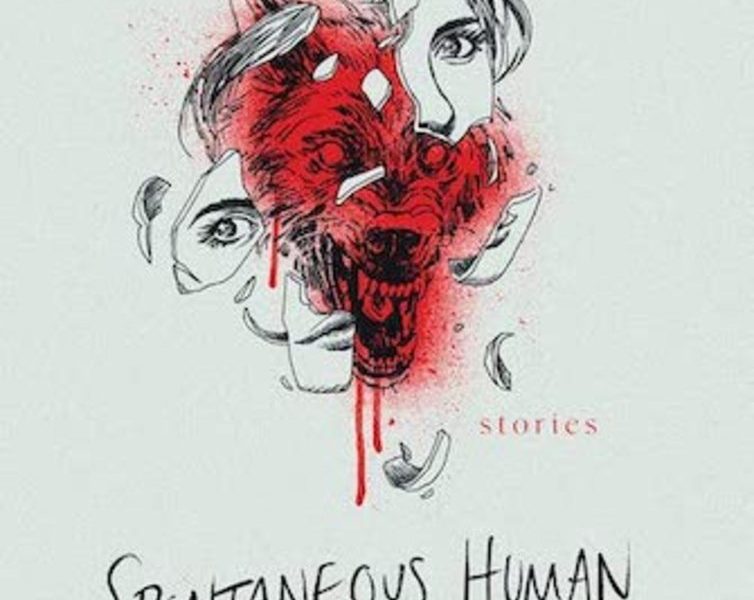How to Write Unique Horror Fiction When Every Trope Has Already Been Used
I’ve been writing dark stories for 14 years professionally, and quite often my students, peers, and friends ask me, “Richard, how do you write unique horror stories when every trope has already been used?” That’s a great question. Something I wrestle with every time I sit down to write. So here are a few ideas.
GENERAL VS. THE SPECIFIC
So, if I mentioned a few horror tropes or monsters, such as a werewolf, vampire, zombie, or demon, you might roll your eyes. “Seen it, been there, done that, bored to death.” And I hear you. But what if I instead showed you the aftermath of some violent natural event that happened deep into the woods—claw marks on trees, patches of fur, a path of blood, and the fresh remains of a recent kill? Are you still rolling your eyes?
(21 Popular Horror Tropes for Writers)
I understand the reaction when somebody trots out a monster or trope you’ve seen done a lot. It’s expected, we worry it will be the same old story, and we don’t want to see it again. But if we don’t name it, and instead work hard to show the edges of the story, to SHOW YOU werewolf vs. TELL YOU werewolf, we have a chance to get under your skin and scare you.
The offerings on the doorstep, the long nails tapping on the window, the things we can see under a full moon that are hidden in the usual darkness—they can add up to create tension. By not defining a creature or trope, we have the opportunity to create something new. That four-legged creature with fur—is it a wolf, a coyote, a werewolf, a Chupacabra? We’ll see in time.
PUSH FOR ORIGINALITY
Building on the last entry and thought, I’d like to encourage you to push for originality in your work. That’s a great way to take a genre such as horror, which already has a huge range, and to create something fresh and new. I’ll talk a bit later about HOW you might do that but for now, let’s look at some examples.
If you aren’t reading Stephen Graham Jones, then you are missing out on one of the most original, effective, and powerful horror authors out there. You can look at a book like Mongrels, which takes the werewolf trope, and turns it on its head, invoking family, and a whole slew of innovative choices. You can look at his last book, The Only Good Indians, which won a Bram Stoker Award, for the ways that he works Native American folklore and custom into a fresh take on ghosts, shapeshifters, and skinwalkers.
Just look around you—to everything from Squid Game to Midnight Mass to the work of A24 Films, which has released powerful horror films in the last couple of years, such as The Witch, Hereditary, Midsommar, and The Green Knight. Take the expectation of this genre, and the heart of a trope that is familiar, granting us access, and then push hard to go in new directions, with fresh characters, plots, settings, and cultures.
YOUR LOCATION AND SETTING
One of the ways you can turn a trope upside down is to tap into the unique setting of where you live, or where you come from. I’m currently finishing my fourth novel, tentatively titled Incarnate, and it’s a sin-eater, arctic horror novel. So when I say arctic horror, what comes to mind? Probably The Thing, and maybe The Terror. And those are films and shows that I did watch, to get inspiration, to fill my head with images, feelings, and sensations. The sin-eater aspect was something relatively new to me, so I had to do a lot of research, and make it my own.
But going back to location, I also decided to base it partly on Barrow, Alaska, where there is 60 days of night every year—the idea that certain things may flourish in the cold and dark, where they might otherwise die in the warmth and daylight. And no, this is not a vampire story. I hired an author I know, Repo Kempt, to be my arctic advisor, since I had a limited knowledge of Alaska and the arctic, and he helped me to get it right, to find details I otherwise would have overlooked, and then double-checked my authority and accuracy. But this all starts from a place of cold, snow, and ice, something I’m very familiar with living in Chicago. It begins with my experiences, and then goes off into this fictional place.
So use your actual house, apartment, or cabin; use your village, city, or state; use the weather of your region; use the different natural settings around you, whether it’s the woods, the city, the ocean, or the desert. I co-wrote a story, “Golden Sun,” that ended up getting into The Best Horror of the Year. When we were brainstorming ideas of how to make this story original (a kind of Rashomon of shared experiences, written with three other authors—Kristi DeMeester, Damien Angelica Walters, and Michael Wehunt) we talked about all of the genre expectations, and then pushed into the opposite directions—not dark, but light; not winter or fall, but summer; not nighttime but daytime; not woods, asylum, or haunted house but beach. So use whatever setting and location you can to subvert the expectation of the genre.
CULTURE AND MYTHOLOGY
Likewise, use whatever culture and mythology is unique to you. Now, I’m a bit of a European mutt—a mix of English, German, Irish, and Nordic—so my own culture isn’t that powerful in my life or history. I don’t have a lot of traditions, stories, or myths that speak to me based on my race, history, or family tree. But YOU may have some stories to tell.
IndieBound | Bookshop | Amazon
[WD uses affiliate links.]
When I was Editor-in-Chief of Dark House Press and then later, Gamut magazine, one of the exciting things about reading the submissions was looking at stories from all over the world. We got submissions from the USA of course, as well as Canada, the U.K., and Australia, but also Japan, Africa, China, Poland, Italy, France, Sweden, etc. So when pushing to do original work within recognizable tropes, look at different cities, countries, and urban legends to tell that story.
I published the work of Usman T. Malik in one of the anthologies I edited (Exigencies) and he went on to be the first Pakistani author to win the Bram Stoker Award. His portrayal of Pakistan and other regions was so powerful, unique, and exciting—I’m not surprised that he’s gotten a lot of attention and done so well.
I can think of the first time that somebody pitched a story with a wendigo in it, Baba Yaga, a golem, a spider trickster, or a banshee. And when it comes to mythology, we get so many Greco-Roman myths in the west, why not tap into other cultures, such as Egyptian, Syrian, or Inuit? You can look at recent books like Mexican Gothic and Hex, or films like Spring and The Wailing.
PLOT TWISTS
Take the established plots and tropes of past horror stories and find new ways to twist and turn the narrative, to subvert the expectation. I think of the shocking, surprising, and yet still earned endings for films like A Dark Song and Saint Maud, or the innovation of The Ballad of Black Tom and My Heart is a Chainsaw. When mapping out your plot—or if you’re a pantser like me, feeling your way forward by intuition and emotion—don’t accept the first choice. Go left or right, or if you’re feeling brave, do the opposite.
For innovative plot twists look at television shows like Black Mirror or Tales From the Loop. It’s not about shocking us, a cat jumping in the window, it’s the psychological horror of the truth being revealed, the pairing of terror (clues, evidence, foreshadowing, symbolism) and horror (the creature, the understanding, the climax, the violence unfurled), as well as the misdirection. Think about the end of films like The Mist and The Village, or Under the Skin and Enemy.
Horror looms large in so many flavors—quiet, splatterpunk, supernatural, Lovecraftian, gothic, classic, psychological, etc.—so write the horror story, and plot, that gets under your skin, and then make unique choices along the way.
GENRE MASHUPS
I consider myself a hybrid author, and so while horror is my main focus, and at the heart of much of my work, I also write fantasy, science fiction, Southern gothic, neo-noir, new-weird, transgressive, magical realism, and literary fiction. I mean, what exactly are Blood Meridian and The Road? Horror, right? Look at the Alien franchise—science fiction, but also horror.
You can take fairy tales, and mythology, and urban legends (Candyman, anyone?) and turn them into stories that utilize the telling, the history, the cultures, and gods that build the framework of familiarity, and then take us off into the shadows of something new, exciting, and terrifying. The surreal, hybrid work of Kelly Robson, Brian Evenson, AC Wise, Stephen Graham Jones, Victor LaValle, Maria Dahvana Headley, Brian Hodge, Usman T. Malik, and Cassandra Khaw will keep you on your toes.
Take that classic fantasy tale, wrap it in horror, and then drop it into a strange location, using your own culture and mythology to defy expectation. Neil Gaiman did that with American Gods. China Mieville did that with Perdido Street Station. Jeff VanderMeer did that with Annihilation. Sara Gran did that with Come Closer.
IN CONCLUSION
When it comes to horror tropes, you’re not going to be able to avoid tapping into the history of the genre, stories, and films that came before you. But what you DO with those familiar elements, that accessible framework, that expected atmosphere, is up to you. Show us something but consider being ambiguous; push to be original; use a setting and location that is different and personal; tap into your culture and mythologies; twist your plots in new directions; and blend all of your influences to create a story that only YOU can tell us.

When you take this six-week course, you’ll discover how to become a travel writer by exploring the different types of articles you can write and developing your writing style. You’ll learn travel writing tips such as how to take your own photographs. Use this course to draft an article that keeps readers captivated and garners interest from travel editors.



